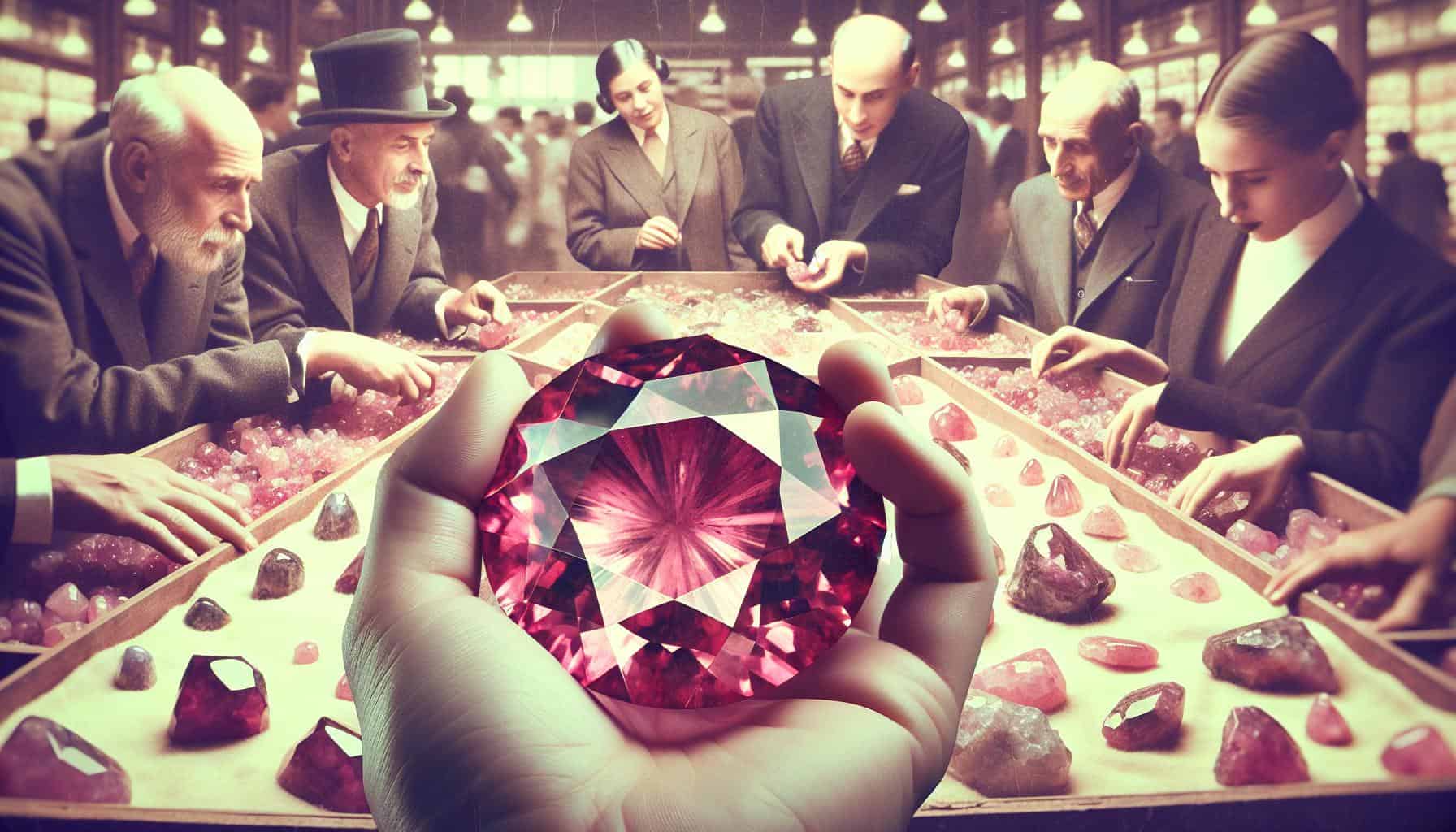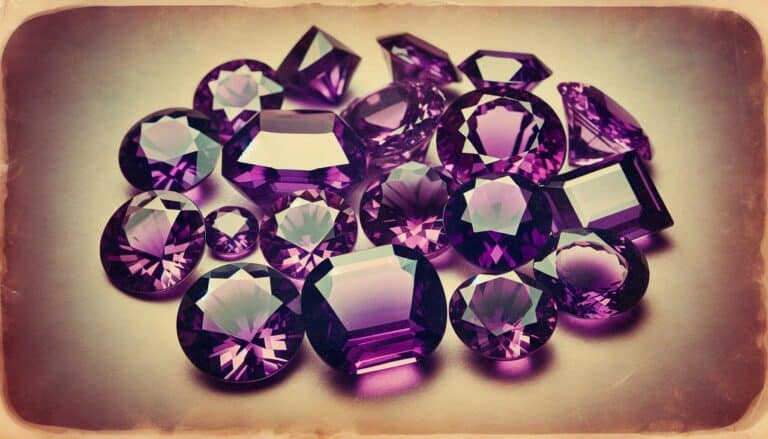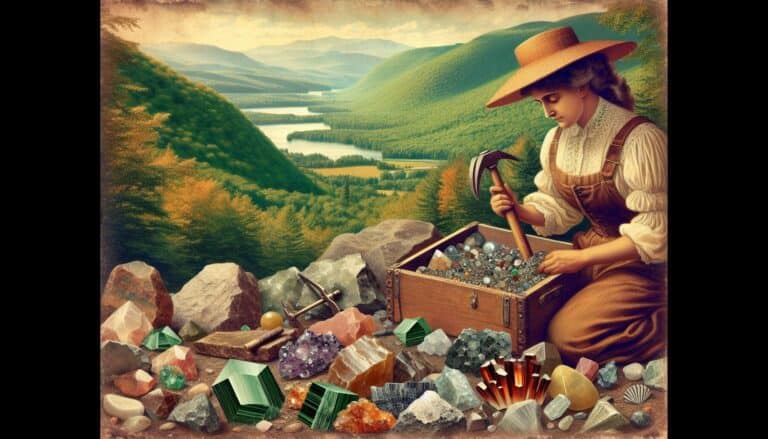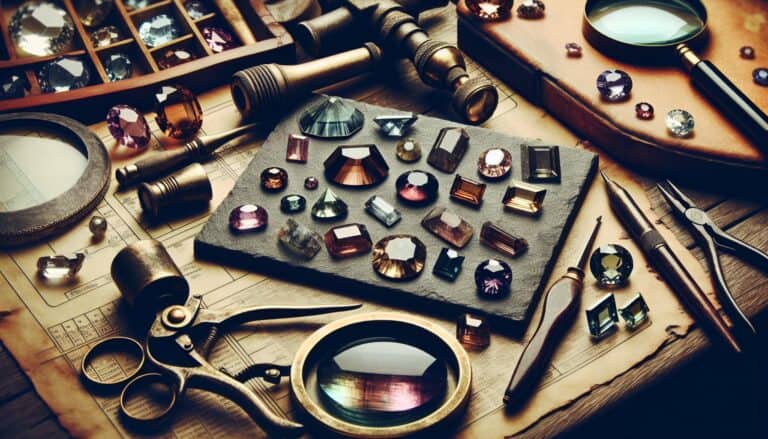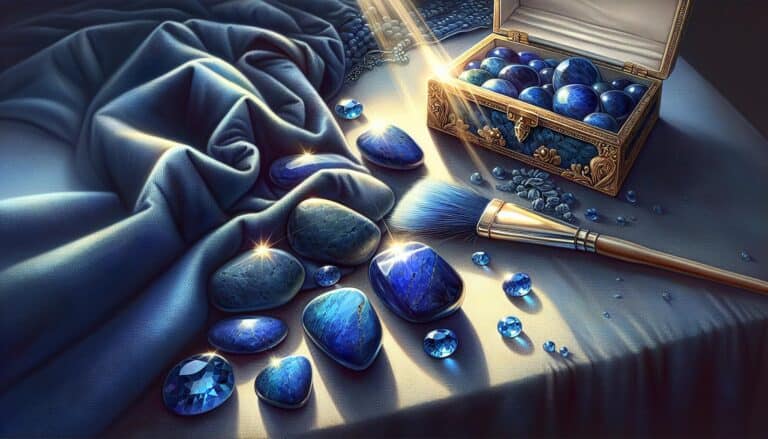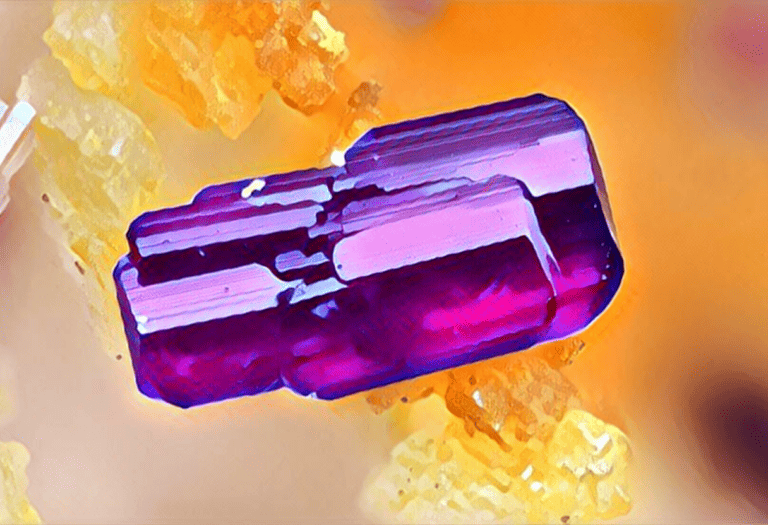Have you ever laid eyes on the captivating hues of rhodonite and wondered about its value?
This gemstone, with its striking pink and black patterns, isn’t just a feast for the eyes but also a curious subject for those interested in the world of minerals and gemstones.
Understanding rhodonite’s worth involves more than just a price tag. It’s about the interplay of its color, rarity, and the demand among collectors and jewelry enthusiasts. Let’s dive into what makes rhodonite a gem worth considering, and how its value is determined in the ever-evolving market.
Whether you’re a seasoned collector or new to the gemstone scene, getting to grips with rhodonite’s worth can be a fascinating journey.
Stick around as we unravel the factors that contribute to the financial and aesthetic worth of this unique stone.
Rhodonite value depends on color intensity, clarity, cut quality, and rarity. Deep rose-red hues with minimal inclusions command higher prices. Market demand and limited availability, especially of high-quality specimens, further influence its worth. When buying, verify authenticity and consider rarity and aesthetics for true value.
What Is Rhodonite?
Rhodonite is a manganese inosilicate, often associated with black manganese oxides which contribute to its distinctive appearance. It stands out with its pink to red coloration and often showcases black dendritic inclusions of manganese oxide. Historically, rhodonite’s name derives from the Greek word “rhodon,” meaning rose, which reflects its beautiful rosy hues that enchant collectors and gem enthusiasts alike.
As a gemstone, rhodonite ranks between 5.5 to 6.5 on the Mohs hardness scale, making it durable enough for various types of jewelry, although its use in items like rings or bracelets should be approached with care due to potential scratching. It’s often found in a cabochon cut, which highlights its rich color and patterns, elevating its visual appeal.
The primary sources of rhodonite include countries like Russia, Australia, Sweden, and Mexico, where mining conditions greatly influence supply and, consequently, its market value. It’s not only mined for its beauty but also for its role as an ore of manganese, which has various industrial applications.
Apart from its physical allure, rhodonite is also cherished for its metaphysical properties. It’s believed to symbolize compassion and emotional healing, making it a sought-after stone in alternative healing circles. Your interest in rhodonite may stem from its potential energy benefits or simply its aesthetic charm, but it’s important to recognize the various aspects that together shape its worth in different spheres.
Rhodonite Prices: Factors That Affect Value
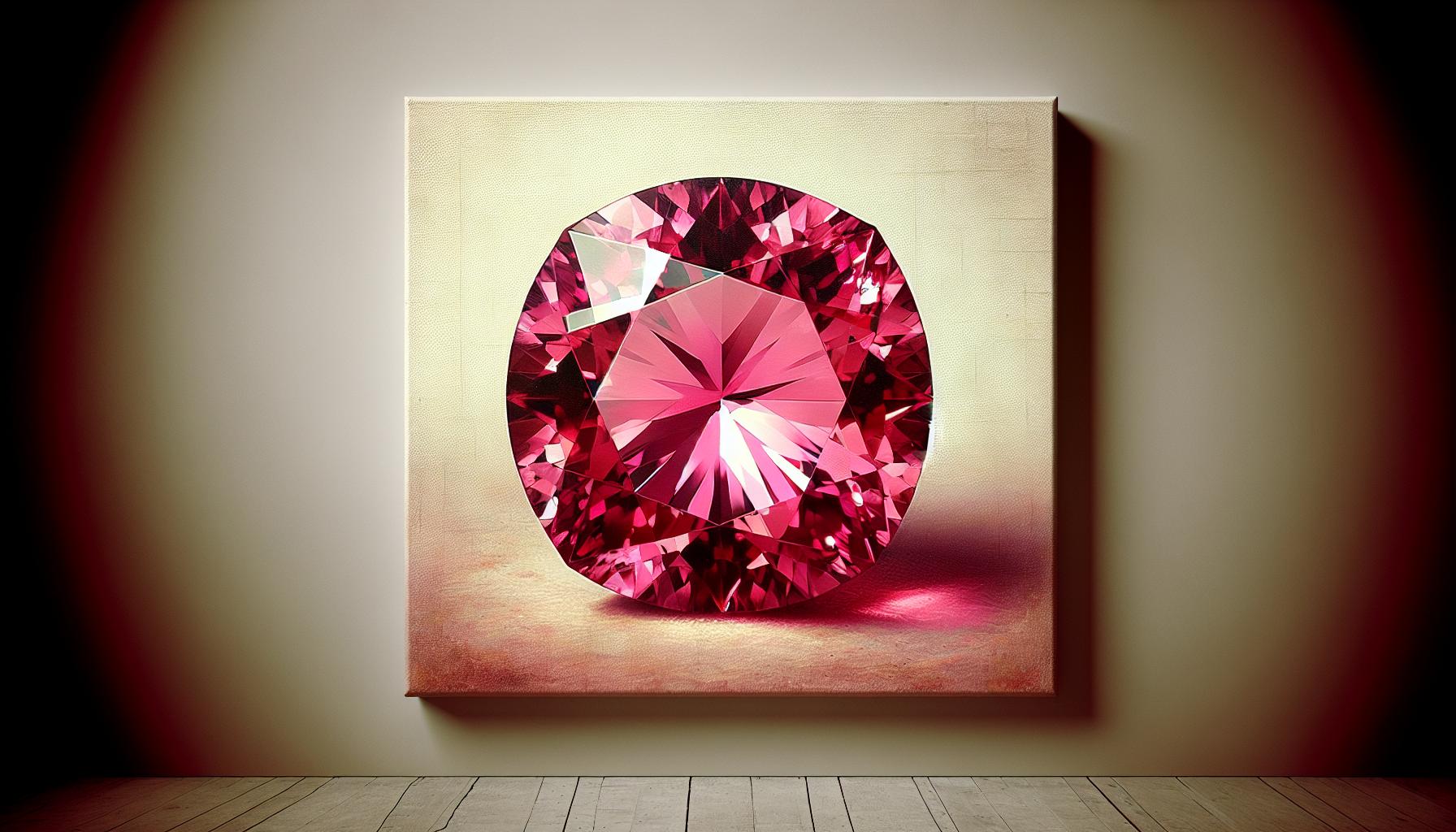
When you’re exploring the value of rhodonite, it’s essential to understand that several key factors come into play. Much like with other gemstones, characteristics such as color, clarity, cut quality, market demand, and availability significantly impact the price tag you’ll encounter.
Color, Clarity, and Cut Quality
Color is a defining feature for rhodonite, with the most sought-after stones flaunting a vibrant pink or rose-red hue. A deeper, more intense color often translates to a higher price point, signifying your gem’s considerable worth in the market.
Concerning clarity, rhodonite stones that display fewer inclusions or imperfections command increased attention and, therefore, higher values. However, some collectors appreciate the unique patterns created by manganese oxide inclusions, which can enhance the stone’s aesthetic appeal.
The cut quality of rhodonite significantly influences its sparkle and visual appeal, affecting its overall value. A well-executed cut showcases the stone’s luster and color evenly, making it more desirable. High-quality cuts, especially the intricate cabochon that is popular with rhodonite, require skilled craftsmanship, further enhancing the gemstone’s value.
Market Demand and Availability
Rhodonite’s market demand fluctuates based on fashion trends and consumer interest. A surge in popularity can raise prices, especially when you’re looking at pieces that are exceptional in color and quality. As jewelry and metaphysical uses of rhodonite increase, you might notice a corresponding rise in its demand and value.
The availability of rhodonite is another crucial component affecting its worth. While found in various locations worldwide, the finest qualities often come from specific regions. If a particular mine yields a scarce amount of high-quality rhodonite, this rarity can drive up prices and make these stones more valuable. Keep in mind that accessibility to such special varieties might be limited, further fueling their exclusivity and worth.
Understanding Rhodonite: A Rare Gem
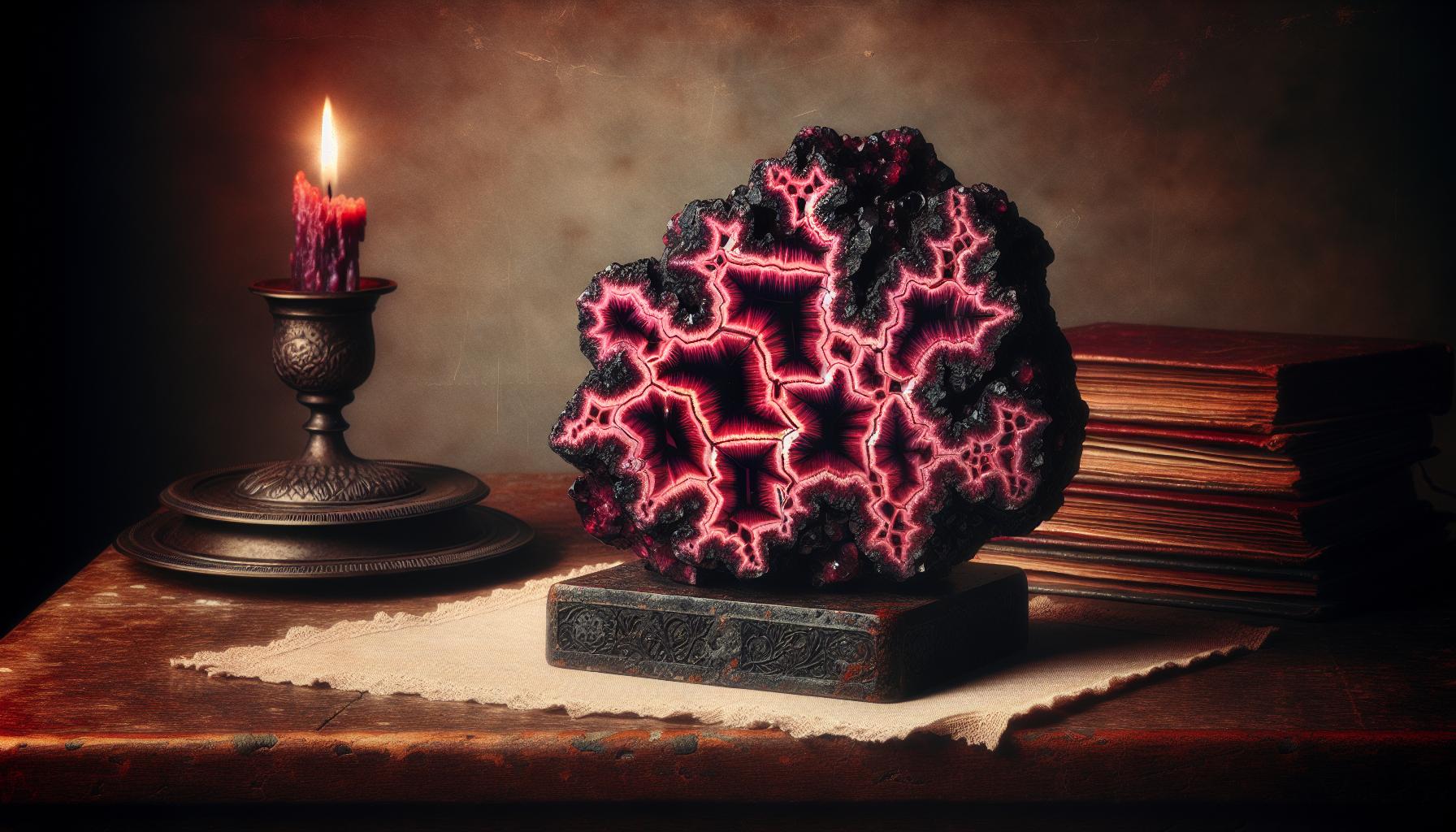
When you’re delving into the value of rhodonite, it’s crucial to recognize why it’s considered a rare gemstone. The rarity directly ties into its worth, making it a significant factor for collectors and enthusiasts alike.
The Rarity of Rhodonite
Rhodonite isn’t your everyday gemstone, found in every jewelry shop or collection. It’s rather unique; you might even call it elusive. Due to its limited availability, rhodonite often takes center stage in the eyes of gemstone connoisseurs. High-quality pieces are especially rare, and when they surface on the market, they command attention — and a price to match.
- Fewer deposits: Rhodonite’s rarity is largely due to the limited number of locations where it can be mined. Only a handful of sites across the globe are known for producing top-tier rhodonite.
- High demand: Its exquisite color range puts it in high demand, particularly from those who seek an alternative to more commonly found gemstones.
- Exclusive Finds: The most prized specimens of rhodonite are those with a deep rose-red hue, often with contrasting black manganese oxide patterns, which are rarer still.
Origins and Characteristics
Rhodonite’s journey from a hidden treasure to a cherished gemstone begins deep within the Earth. Primarily mined in places like Australia, Russia, Sweden, and Brazil, the geographical origins play a pivotal role in its characteristics and, subsequently, its value.
Each rhodonite stone presents a unique blend of elements:
- Distinct hues: While the pink to rose-red tones are most desirable, the stone can also display brownish-red to oranger shades.
- Manganese inclusions: The presence of black manganese inclusions can either enhance or detract from a stone’s appearance, influencing its overall worth.
- Versatility in cut: Rhodonite can be fashioned into various shapes, from the classic cabochon that showcases its luster to more intricate faceted designs that highlight its transparency.
With its impressive origins and defining characteristics, rhodonite stands out as a remarkable gem. Knowing its backstory and the elements that make up its allure help you understand the nuances of its valuation. Whether you’re scouting for investment pieces or adding to a personal collection, considering these aspects of rhodonite’s rarity and origins ensures you’re informed and ready to make astute decisions in the gem market.
Rhodonite Grading and Valuation
The Grading System for Rhodonite
When you’re looking to determine the value of rhodonite, it’s crucial to understand the grading system used for this gemstone. Grading rhodonite typically involves assessing several quality factors:
- Color: The most valuable rhodonite exhibits a rich, vibrant rose-red color with a consistent hue throughout the stone.
- Transparency: Rhodonite can range from opaque to translucent. Generally, higher translucency can increase the gemstone’s worth.
- Clarity: The presence of inclusions or fractures can affect the clarity and, consequently, the stone’s value. Clean stones with few to no visible flaws are graded higher.
- Cut: The skill with which rhodonite is cut will impact its appeal and price. A well-executed cut enhances the gemstone’s color and brilliance.
Each of these factors contributes to the final grading of rhodonite, providing insights into its quality and potential market price. High-grade rhodonite is expected to display excellent color and clarity paired with masterful cutting techniques.
Certification and Appraisal
Before you invest in rhodonite, it’s a wise move to seek certification and appraisal from reputable sources. A certificate of authenticity from a recognized gemological laboratory will verify the gemstone’s natural origin and highlight its grading attributes. Not only does certification add to the credibility of the stone’s quality, but it also plays a vital role in valuation.
The appraisal process involves a professional gemologist evaluating the rhodonite to estimate its market value. The appraiser will examine the aforementioned grading factors and may also consider:
- Size and weight: Larger rhodonite specimens, especially those over a certain carat threshold, can fetch higher prices.
- Rarity: Unique characteristics or provenance that adds to the stone’s rarity can boost its desirability among collectors.
It’s essential for both buyers and sellers to realize that market trends and consumer demand also influence the valuation of rhodonite. These external factors can vary over time, which means that the worth of rhodonite might fluctuate accordingly. Therefore, staying informed about the current gem market is an important aspect of understanding rhodonite’s value.
Current Market Trends in Rhodonite Pricing
When you’re looking to purchase rhodonite, understanding the current market trends is key to making an informed decision. Recently, there’s been a notable shift towards natural and untreated stones in the gem market. Rhodonite that has not been enhanced or treated in any way typically commands a higher price.
Collector’s items and unique pieces, especially those with striking patterns or unusual colors, are highly sought after and can fetch premium prices. The intense pink to reddish shades are particularly prized and tend to be more valuable than specimens with brown or black tones. Transparency is a factor as well, with more transparent stones being rare and thus, more expensive.
Here is how the pricing for rhodonite may vary based on size and quality:
| Size (Carats) | Low Quality (USD) | High Quality (USD) |
|---|---|---|
| 1 – 5 | $5 – $50 | $100 – $500 |
| 6 – 10 | $50 – $300 | $500 – $1000 |
| 10+ | $300 – $1500 | $1000+ |
Aside from the inherent qualities of the stone, fashion trends also play a significant role in determining rhodonite’s worth. When designers and celebrity influencers feature rhodonite in their collections or personal accessories, demand spikes and prices can quickly follow suit.
The source of the rhodonite also informs its value, with material from Russia often being considered the highest quality due to its rich coloring and history. Conversely, stones from other locations may be more abundant but see price reductions because of increased accessibility.
If you’re in the market for this beautiful gemstone, stay up-to-date with trade shows, auctions, and online marketplaces. These platforms provide insight into what’s available and at what cost, helping you gauge the best time to buy. Remember, prices are always fluctuating and keeping an eagle eye on market trends will aid you in finding the sweet spot for your purchase.
The Most Expensive Rhodonite
When delving into the realm of the finest rhodonite specimens, you’ll find that rarity and uniqueness often dictate their price tags. High-grade rhodonite that showcases a vibrant raspberry or rose-pink hue, coupled with significant transparency and minimal inclusions, commands top dollar in the market. Some of the most expensive pieces of rhodonite are those that have not only exceptional color and clarity but also a significant size or an unusual, attractive cut.
Collector’s items, especially those that are large and in pristine condition, can fetch astonishing prices at auctions. For example, rhodonite sculptures or sizable, intricately carved ornaments that showcase the stone’s beauty are highly sought after and can be considered investments by collectors and enthusiasts.
Here’s a glimpse into what sets apart top-tier rhodonite in terms of pricing:
- Provenance: Stones with a documented discovery location, particularly from renowned mines, may be more valuable.
- Historical significance: Rhodonite with a storied past or previously owned by influential figures might attract premium prices.
- Unique characteristics: Specimens displaying extraordinary patterns, such as contrasting matrix streaks or rare inclusions, are prized.
At the pinnacle of rhodonite valuation, individual pieces have been known to reach well into the thousands of dollars. For instance, large, museum-quality samples easily break the $10,000 mark depending on their features. It’s not just the intrinsic attributes of the stone that inflate its value; the artistry involved in shaping and presenting the stone plays a pivotal role as well.
To give you a more structured insight into the pricing, here are a few recent records from notable sales:
| Feature | Sale Price USD |
|---|---|
| Large Carved Rhodonite Ornament | $8,500 |
| Fine Quality Rhodonite Gemstone | $1,200 per carat |
| Museum-Quality Rhodonite Sample | Over $10,000 |
As markets evolve and collectors’ tastes shift, the price ceiling for exceptional rhodonite pieces might continue to rise. Keeping an eye on current auction records and engaging with the gemstone community can offer valuable benchmarks for understanding the worth of premium rhodonite. Whether you’re in the market to buy or simply appreciate the allure of this captivating gemstone, knowing the factors that contribute to its worth is key.
Buying Rhodonite: Tips and Recommendations
When you’re on the hunt for high-quality rhodonite, it’s imperative to know where to look and how to secure a stone that not only meets your desires in terms of aesthetics but also offers good value for your investment.
Where to Purchase High-Quality Rhodonite
Specialized Gemstone Stores
Your first stop should be specialized gemstone stores. These retailers often have direct connections with mines and trusted suppliers, ensuring that the rhodonite you purchase is of the highest quality. Look for stores with a strong reputation and a history in the gem business, as they’re more likely to provide gemstones that live up to your expectations.
Online Marketplaces
Online marketplaces are convenient places to find a variety of rhodonite pieces. However, it’s crucial to be cautious. Opt for well-known platforms that offer buyer protection and have clear return policies. Check for reviews from previous customers and ask for certificates of authenticity when available.
Gem Shows and Mineral Expos
Attending gem shows and mineral expos can also be a smart move. These events give you the opportunity to see the rhodonite up close and compare different pieces before making a purchase. Plus, interacting with knowledgeable vendors can provide valuable insights.
Auctions
Auctions, both live and online, are excellent for finding unique rhodonite specimens, especially if you’re looking for something truly special. Stay updated with auction calendars and do your homework on the pieces you’re interested in beforehand.
Ensuring Authenticity and Value
Request Documentation
Always ask for documentation when buying rhodonite. Certification from recognized gemological laboratories can verify the stone’s natural origins and confirm its quality attributes.
Understand the Return Policy
Familiarize yourself with the seller’s return policy. This allows you to have peace of mind knowing that you can return the rhodonite if it does not meet your expectations or if it turns out to be different from its description.
Seek Professional Appraisal
Consider getting a professional appraisal, especially for more costly rhodonite pieces. This can prevent you from overpaying and ensures that you’re adding a genuine piece to your collection.
Research Current Prices
Stay informed about the current prices of rhodonite by researching recent sales and checking current listings. Understanding the factors that influence rhodonite’s value will help you make an informed decision and recognize a fair deal when you see one.
Remember, when buying rhodonite, it’s not just about finding a piece that you connect with visually. You want to ensure that you’re making a smart purchase that holds its value. Keep these tips in mind and take your time selecting a piece that meets all your criteria.
Conclusion: Buying & Selling Rhodonite
You’ve got the tools you need to make an informed decision on the true worth of rhodonite.
Remember, patience and due diligence are your best allies in finding a gemstone that doesn’t just sparkle but also holds its value over time. Trust in the process, from researching to professional appraisals, and you’ll be confident in your investment.
Don’t rush—your perfect piece of rhodonite is waiting for you, and it’s worth every bit of effort you put into the search.

